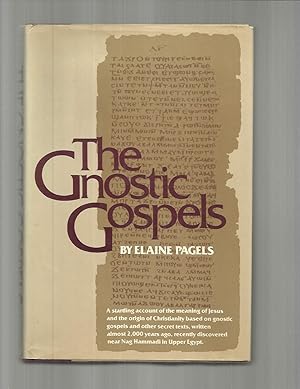The Gnostic Gospels
Gnosticism’s Christian form grew to prominence in the 2nd century A.D. Ultimately denounced as heretical by the early church, Gnosticism proposed a revealed knowledge of God (“gnosis” meaning “knowledge” in Greek), held as a secret tradition of the apostles. In The Gnostic Gospels, author Elaine Pagels suggests that Christianity could have developed quite differently if Gnostic texts had become part of the Christian canon. Without a doubt: Gnosticism celebrates God as both Mother and Father, shows a very human Jesus’s relationship to Mary Magdalene, suggests the Resurrection is better understood symbolically, and speaks to self-knowledge as the route to union with God. Pagels argues that Christian orthodoxy grew out of the political considerations of the day, serving to legitimize and consolidate early church leadership. Her contrast of that developing orthodoxy with Gnostic teachings presents an intriguing trajectory on a world faith as it “might have become.” The Gnostic Gospels provides engaging reading for those seeking a broader perspective on the early development of Christianity. Hall Top Amazon Review: A provocative, insightful look at the early Christian church Noted historian of the early church Elaine Pagels has produced a clear, cogent, and very effective introduction to the subject of Gnosticism, a different form of Christianity that was declared heretical and virtually stamped out by the orthodox church by the start of the second century after Christ.
Question: 'What are the Gnostic gospels?' Answer: The Gnostic gospels are writings by early 'Christian'. After the first century of Christianity, two primary divisions developed - the orthodox and the Gnostics. The orthodox Christians held to books we now have in the Bible and to what is today considered orthodox theology.
The Nag Hammadi Library (Nag Hammadi Scriptures and the Gnostic Gospels). The site includes the Gnostic Society Library with the complete Nag Hammadi Library and. Sometimes people mention gospels outside of the biblical books of Matthew, Mark, Luke, and John, and they use a funny-looking word.
Most of what we knew of the Gnostic belief system came from the religious authors who worked so hard to destroy the movement, but that changed drastically with the still relatively recent discovery of a number of lost Gnostic writings near Nag Hammadi in Upper Egypt. Unlike the Dead Sea Scrolls, this momentous discovery of ancient papyri has received little attention, and I must admit I went into this book knowing virtually nothing about Gnosticism. As an historian by training and a Christian, the information in these “heretical” texts intrigue me, and I believe that Christians should challenge their faith by examining material that does not fall in line with accepted beliefs. I should note that Pagels does not attempt to summarize or examine in detail the Gnostic Gospels in and of themselves; her particular focus here is the way in which Gnosticism affected the rise of the orthodox church that declared the Gnostics heretics. Still, she presents a great deal of information on many of the newly discovered texts and inarguably shows that the Christian church was founded in a society espousing a number of contradictory viewpoints.


Create A Script To Run A Program. Pagels does a good job of presenting the context in which the early Christians lived and eventually argued against one another. The debate was seemingly one over spiritual authority, and social and political issues played a part alongside purely religious disagreements between different factions. I think she tends to overemphasize the sociopolitical implications of Gnosticism, yet her arguments are certainly sensible and enlightening. One of the problems with Gnosticism as a movement was the disagreement among many so-called Gnostics on a number of issues. In terms of Gnosticism as a whole, however, one can point to a number of thoughts and ideas that ably represent the whole. Gnostics basically saw their faith as an internal thing, a practice based on the secret knowledge Jesus supposedly shared with a select number of individuals, one of whom was Mary Magdalene. Gnostics attracted women in particular because most Gnostics viewed everyone as equal and allowed for the participation of women in any sacred act. Wan Miniport Pppoe Driver For Windows 7.